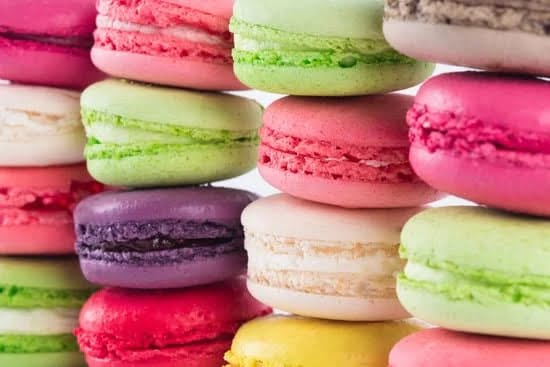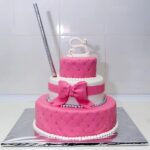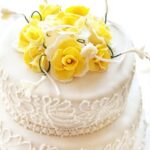Embossing cake decorating is a captivating technique that adds intricate texture and design to cakes, transforming them into edible works of art. This method involves pressing patterns or motifs onto fondant or gum paste to create raised impressions, resulting in visually stunning, tactile creations that are sure to wow both the eyes and taste buds.
In recent years, embossing cake decorating has gained considerable popularity among both professional bakers and home enthusiasts. This surge in interest can be attributed to its ability to elevate ordinary cakes into extraordinary masterpieces. The unique textures created by embossing give cakes an elegant and sophisticated touch, making them stand out at any occasion.
One of the key benefits of embossing cake decorating is the versatility it offers. With a wide variety of embossing mats, stamps, and stencils available in the market, decorators can experiment with countless patterns and designs. From delicate floral motifs for romantic weddings to bold geometric patterns for contemporary celebrations, there are endless creative possibilities with embossing cake decorating.
Whether you’re a seasoned baker looking to expand your repertoire or a beginner exploring the world of cake decorating, embossing offers a new realm of opportunities.
In the following sections, we will delve deeper into the history of this art form, explore the tools and materials needed for embossing cake decorating, provide step-by-step guides and troubleshooting tips, showcase inspiring examples, examine its applications in different occasions, and ultimately inspire you to discover your own embossing cake decorating journey.
Get ready to take your cakes to enchanting new heights with this captivating technique.
History of Embossing Cake Decorating
Embarking on a journey through the history of embossing cake decorating gives us a glimpse into its rich and evolving traditions. While the technique has gained popularity in recent years, it actually has roots that date back centuries. This section explores the origins of embossing cake decorating, its evolution over time, and highlights key milestones and influential figures that have shaped this art form.
The practice of embossing can be traced back to ancient civilizations such as Egypt, where carvings and etchings were commonly used to create intricate designs on various materials. As baking and pastry techniques evolved, these decorative methods found their way onto cakes. In Europe during the Renaissance period, cakes adorned with embossed patterns became fashionable among royal courts and elite circles.
One notable figure in the history of embossing cake decorating is Marie-Antoine Carême, a 19th-century French chef who was known for his elaborate and ornate culinary creations. Carême’s innovative approach to cake design included using molds and stamps to create intricate relief patterns on cakes. His contributions laid the groundwork for the development of embossing techniques as we know them today.
Throughout the 20th century, embossing cake decorating continued to evolve with advancements in technology and an increased focus on artistic expression within the culinary world. In recent decades, with advancements in design tools and materials, embossing techniques have become more accessible to home bakers and professionals alike. The popularity of televised baking competitions has also played a role in introducing embossing cake decorating to a wider audience.
| Period | Key Milestone |
|---|---|
| Ancient civilizations | Embossed patterns introduced onto cakes |
| Renaissance period | Embossing cake decorating popular among royal courts and elite circles |
| 19th century | Marie-Antoine Carême pioneers the use of molds and stamps for embossing cake designs |
| 20th century | Advancements in technology and accessibility contribute to the evolution of embossing techniques |
Tools and Materials for Embossing Cake Decorating
Embarking on your embossing cake decorating journey requires having the necessary tools and materials at your disposal. In this section, we will provide a comprehensive list of essential equipment needed for successful embossing cake decorating. Additionally, we will delve into the different types of embossing mats, stamps, and stencils available in the market. We will also discuss the various edible mediums commonly used in this technique, such as fondant and gum paste.
| Tools | Description |
|---|---|
| Embossing Fondant Roller | A specialized rolling pin designed to create consistent impressions on fondant or gum paste. |
| Embossing Mats/Stamps/Stencils | These are available in a wide range of patterns and designs to imprint onto your icing or fondant. |
| Precision Knife/Scalpel | To carefully trim excess fondant or create intricate details on the embossed design. |
| Powder Shaker (Cornstarch/Powdered Sugar) | To prevent sticking while working with fondant or gum paste. |
Aside from these fundamental tools, there are several types of embossing mats, stamps, and stencils available to cater to various design preferences. Embossing mats can be made of silicone or other food-safe materials with raised patterns that are pressed onto rolled-out fondant or gum paste.
Stamps, on the other hand, are more detailed and intricate, allowing for precise and specific designs to be embossed onto the cake surface. Stencils offer a different approach by allowing you to lay a pattern on top of the cake and then apply pressure to create an embossed effect.
When it comes to edible mediums used in embossing cake decorating, fondant and gum paste are the most commonly utilized materials. Fondant is a smooth and pliable icing made from sugar, water, and other ingredients like gelatin or glucose syrup. It is specially formulated to be rolled out and draped over cakes for a flawless finish.
Gum paste, on the other hand, is a firmer icing made with confectioner’s sugar, shortening, egg whites, and tylose powder or CMC (sodium carboxymethyl cellulose) powder. It is ideal for creating delicate decorations like flowers and intricate embossed patterns.
By having these tools and materials ready, you will be well-equipped to venture into the art of embossing cake decorating. The next section will guide you through the step-by-step process of achieving beautiful embossed designs on your cakes.
Step-by-Step Guide to Embossing Cake Decorating
Preparing the Cake and Fondant
Before you can begin embossing your cake, it’s essential to properly prepare both the cake itself and the fondant that will be used for the design. Start by baking and cooling your cake according to your preferred recipe. Once the cake is completely cooled, level the top to create a flat surface for decorating.
Next, roll out your fondant to a thickness of about 1/4 inch. Make sure to dust your work surface with powdered sugar or cornstarch to prevent sticking. To cover the cake with fondant, gently lift the rolled-out fondant using a rolling pin and place it over the prepared cake. Smooth out any wrinkles or air bubbles by gently pressing down on the fondant and working from the center outward.
Using Embossing Mats or Stamps
To create beautiful embossed designs on your fondant-covered cake, you will need embossing mats or stamps. These tools are available in various patterns and textures, allowing you to achieve different looks depending on your desired aesthetic.
To use an embossing mat, simply lay it over the top of the fondant-covered cake. Gently press down on the mat, ensuring all areas of the design make contact with the fondant. Carefully lift off the mat, revealing an intricately embossed pattern on your cake’s surface.
Alternatively, if you prefer to use embossing stamps, lightly dust them with powdered sugar or cornstarch before pressing them into the fondant. Apply even pressure while rocking or twisting the stamp slightly to ensure complete contact with all parts of the design. Lift off the stamp to reveal a stunning embossed pattern.
Variations in Embossing Techniques
Embossing techniques can be varied and customized based on personal preference and design goals. For more pronounced patterns, apply firm pressure when using the embossing mats or stamps. If you want a softer, more subtle embossed effect, use lighter pressure.
To create multiple embossed designs on a single cake, simply reposition the mat or stamp and repeat the process. Experiment with different placement and combinations of patterns to achieve unique and visually appealing results.
Remember to clean your embossing tools after each use to prevent any residual fondant from affecting future designs. Use warm water and mild dish soap, being careful not to soak wooden handles or let water get into crevices of the stamps or mats.
By following this step-by-step guide, you can easily master the art of embossing cake decorating. With practice and creativity, you’ll be able to create stunning embossed designs that will impress both friends and clients alike.
Techniques and Tips for Embossing Cake Decorating
Embossing cake decorating is a versatile technique that allows cake decorators to add texture, depth, and intricate designs to their creations. With the right tools and techniques, embossing can elevate the visual appeal of a cake and create unique and eye-catching designs. In this section, we will explore some techniques and tips for achieving flawless embossed designs on cakes.
Tips for Achieving Flawless Embossed Designs
- Roll Fondant or Gum Paste Evenly: To get a clean embossed design, it’s essential to roll out your fondant or gum paste evenly. Make sure to use a rolling pin with spacers or guides to ensure an even thickness throughout.
- Dusting with Cornstarch: Before using an embossing mat or stamp, lightly dust it with cornstarch to prevent sticking. This will help achieve crisp and defined impressions on the fondant.
- Apply Proper Pressure: When using an embossing mat or stamp, apply even pressure while pressing it onto the fondant. This will ensure that the design transfers uniformly without any blurred sections.
- Experiment with Different Mediums: Embossing cake decorating isn’t limited to just fondant or gum paste. Try experimenting with other edible mediums such as modeling chocolate or marzipan to achieve different textures and finishes.
Common Issues and Troubleshooting
- Sticking Fondant: If your fondant is sticking to the embossing mat or stamp, try dusting it with more cornstarch or powdered sugar before applying pressure. You can also chill the fondant slightly in the refrigerator before working with it.
- Smudged Designs: Smudging can occur if there’s excess moisture on your hands when handling the fondant. Make sure your hands are dry and clean before touching the fondant to prevent any unwanted smudges on your design.
- Uneven Impressions: If you’re getting uneven impressions on the fondant, it could be due to an uneven application of pressure. Make sure to press evenly across the entire embossing mat or stamp to achieve consistent results.
- Rips and Tears: Avoid pressing too hard or using sharp tools when embossing the fondant as this can lead to rips and tears. Handle the fondant with care and make gentle but firm impressions for best results.
By following these tips and troubleshooting any issues that may arise, you’ll be able to create stunning embossed designs on your cakes. Remember, practice makes perfect, so don’t be afraid to experiment with different techniques and get creative with your designs.
Inspiring Examples of Embossing Cake Decorating
Embossing cake decorating offers endless possibilities for creating stunning and intricate designs on cakes. To inspire and awe aspiring decorators, here are some captivating examples of embossing cake decorating that showcase the versatility and artistry of this technique.
- Delicate Lace Patterns: Imagine a wedding cake adorned with delicate lace patterns created through embossing. By using a lace-patterned embossing mat or stencil, you can achieve an elegant and romantic look that is sure to impress wedding guests. The embossed lace creates a textured surface that adds dimensionality to the cake, making it stand out as a centerpiece.
- Floral Elegance: Another popular application of embossing cake decorating is creating stunning floral designs. With flower-patterned embossing mats or stamps, you can add beautiful floral textures to your cakes that mimic the appearance of real flowers. From rosebuds to daisies, the possibilities are endless when it comes to incorporating embossed florals into your cake designs.
- Geometric Bliss: Embossing techniques can also be used to create modern and geometric designs that cater to contemporary tastes. With geometric-shaped embossing stamps or mats, you can achieve precise patterns such as squares, triangles, or diamonds on your cakes, giving them a trendy and sophisticated look.
The examples mentioned above only scratch the surface of what is possible with embossing cake decorating. By exploring different designs, themes, and motifs, decorators can create truly unique creations that leave a lasting impression on clients and guests alike. So go ahead and let your imagination run wild with embossing cake decorating.
Troubleshooting and Common Mistakes to Avoid
Embarking on embossing cake decorating can be a fun and rewarding experience, but like any art form, it comes with its share of challenges. In this section, we will address some common troubleshooting issues that may arise during the embossing cake decorating process and provide solutions to help you overcome them. Additionally, we will discuss common mistakes that beginner embossing cake decorators tend to make and offer tips on how to avoid them.
Troubleshooting Issues:
- Fondant or gum paste sticking to the mat/stamp: To prevent this issue, lightly dust the surface of the mat/stamp with cornstarch or powdered sugar before applying the fondant or gum paste. This will create a barrier and facilitate the easy release of the embossed design.
- Uneven or incomplete embossed patterns: If your embossed pattern appears uneven or incomplete, ensure that you are applying consistent pressure when rolling or pressing the mat/stamp onto the fondant/gum paste. Take your time and make sure to cover all areas evenly for a uniform result.
- Tearing or distortion of fondant/gum paste: If you notice tearing or distortion of your fondant/gum paste while embossing, it may be due to either too much pressure being applied or insufficient kneading of the medium. Adjust your pressure accordingly and make sure to knead the fondant/gum paste until it is pliable and smooth before using it for embossing.
Common Mistakes to Avoid:
- Using too much force: Applying excessive force when rolling or pressing the mat/stamp onto the fondant/gum paste can result in distorted patterns or even breakage. Remember that a gentle and consistent pressure is sufficient for achieving crisp embossed designs.
- Rushing through the process: Embossing cake decorating requires patience and attention to detail. Take your time when preparing the cake, fondant/gum paste, and embossing materials. Rushing can lead to mistakes and unsatisfactory results.
- Neglecting to practice: Embossing cake decorating is a skill that requires practice and experimentation to master. Don’t be discouraged if your first attempts don’t turn out perfectly. With practice, you will develop a better understanding of the techniques and achieve more polished results.
By being aware of these common issues and avoiding these mistakes, you can elevate your embossing cake decorating skills and ensure a smoother creative process. Remember that troubleshooting is part of the learning journey, and with perseverance, you’ll be able to create beautiful embossed designs on your cakes.
Showcasing Embossing Cake Decorating in Different Occasions
Embarking on the journey of embossing cake decorating opens up a world of creative possibilities for various occasions and celebrations. The versatility of this technique allows decorators to customize cakes for everything from birthdays to weddings to holidays. In this section, we will explore how embossing cake decorating can be tailored to different events, discuss unique design ideas, and provide inspiration for incorporating embossed designs into various cake styles and themes.
- Birthdays: When it comes to birthdays, embossing cake decorating offers endless opportunities for personalization. Whether it’s a child’s favorite character or a milestone celebration, you can use embossed designs to capture the essence of the occasion. Create textured patterns inspired by balloons or confetti using embossing mats for a whimsical touch. For a more sophisticated look, consider delicate floral motifs or elegant monogram designs on the cake.
- Weddings: Embossing cake decorating can add an exquisite touch to wedding cakes. From classic lace patterns to intricate filigree designs, embossed details can lend an air of elegance and sophistication. Consider using pearlized fondant or edible metallic paints to enhance the texture and create a luxurious aesthetic. Additionally, incorporating motifs that match the theme of the wedding, such as flowers or abstract geometric patterns, can elevate the overall design.
- Holidays: Celebrations like Christmas, Easter, or Halloween present opportunities to incorporate festive elements into your embossed cakes. Use seasonal stencils or stamps to create holiday-themed patterns like snowflakes or reindeer during Christmas time. For Halloween cakes, try eerie cobweb designs or spooky motifs like bats and witches hats. Simple color choices in seasonal hues can also enhance the theme and make your embossed design stand out.
Embossing cake decorating adds an extra dimension of creativity beyond just flavor and presentation – it transforms your cakes into works of edible art that reflect the unique spirit of each special occasion. By customizing embossed designs to suit different events and celebrations, you can create unforgettable cakes that leave a lasting impression on guests.
So the next time you have a cake project for a specific occasion, don’t hesitate to explore the world of embossing cake decorating and let your imagination run wild.
Conclusion
In conclusion, embossing cake decorating is a versatile and increasingly popular technique that adds a touch of elegance and sophistication to any cake. Throughout this article, we explored the origins and evolution of embossing cake decorating, discussed the essential tools and materials needed, provided a step-by-step guide for beginners, shared expert tips and techniques, showcased inspiring examples, addressed common challenges and mistakes to avoid, and explored how embossing can be customized for different occasions.
Embossing cake decorating offers countless possibilities for creating unique and visually stunning designs. Whether you’re a novice or an experienced baker, embossing allows you to add texture, depth, and intricate patterns to your cakes. From simple floral motifs to elaborate lace designs, the options are limitless.
As embossing continues to gain traction in the world of cake decorating, it’s important to stay open-minded and embrace new techniques and designs. Don’t be afraid to experiment with different patterns or mediums. Let your creativity soar as you discover new ways to incorporate embossed designs into your own signature style.
So why not give embossing cake decorating a try? It’s a rewarding skill that allows you to transform ordinary cakes into works of art. Whether you’re baking for friends and family or running a professional bakery business, mastering the art of embossing will undoubtedly elevate the visual appeal of your creations. Start by practicing the basics outlined in this article and gradually expand your skills as you become more confident. Happy embossing.
Frequently Asked Questions
How do you emboss a cake?
Embossing a cake involves creating a raised or textured design on the surface of the cake. To emboss a cake, you typically start by covering the entire cake with a layer of fondant. Fondant is a smooth and pliable icing that can be rolled out into sheets and draped over cakes for a flawless finish.
Once the fondant is applied, you can use various tools to create the embossed design. These tools can include embossing mats, textured rolling pins, or custom-made stencils. By pressing these tools into the fondant surface, you can create beautiful patterns or designs that give your cake an elegant and artistic touch.
What icing do you use for embossing?
When it comes to embossing a cake, there are different types of icings you can use depending on your preference and desired outcome. The most commonly used icing for embossing is fondant. Fondant has a smooth texture and provides an ideal canvas for creating intricate and detailed patterns. Its ability to be rolled out and draped over the cake makes it easy to cover an entire cake evenly and smoothly before applying the embossed design.
However, it’s worth noting that royal icing can also be used for embossing in some cases. Royal icing is made by beating egg whites with powdered sugar until stiff peaks form, resulting in a thick and glossy icing that hardens when dry. While it may not offer as much flexibility as fondant in terms of shaping and draping, it can still be piped onto cakes to create embossed designs with slightly different textures.
What is embossed icing?
Embossed icing refers to the decorative technique of creating raised or textured designs on the surface of an iced cake using specialized tools or techniques mentioned earlier like embossing mats, textured rolling pins, or stencils. The icing itself doesn’t have any unique properties; rather, it serves as a canvas for showcasing the embossed design. While classic buttercream or whipped cream icings can be used for embossing, fondant is the most popular option for achieving a clean and flawless embossed finish.
The embossing process involves pressing the chosen tools into the icing to create patterns, textures, or even three-dimensional designs. The result is a visually appealing cake with added depth and dimension that can elevate any special occasion or celebration.

Welcome to our cake decorating blog! My name is Destiny Flores, and I am the proud owner of a cake decorating business named Cake Karma. Our mission is to provide delicious, beautiful cakes for all occasions. We specialize in creating custom cakes that are tailored specifically to each customer’s individual needs and tastes.





